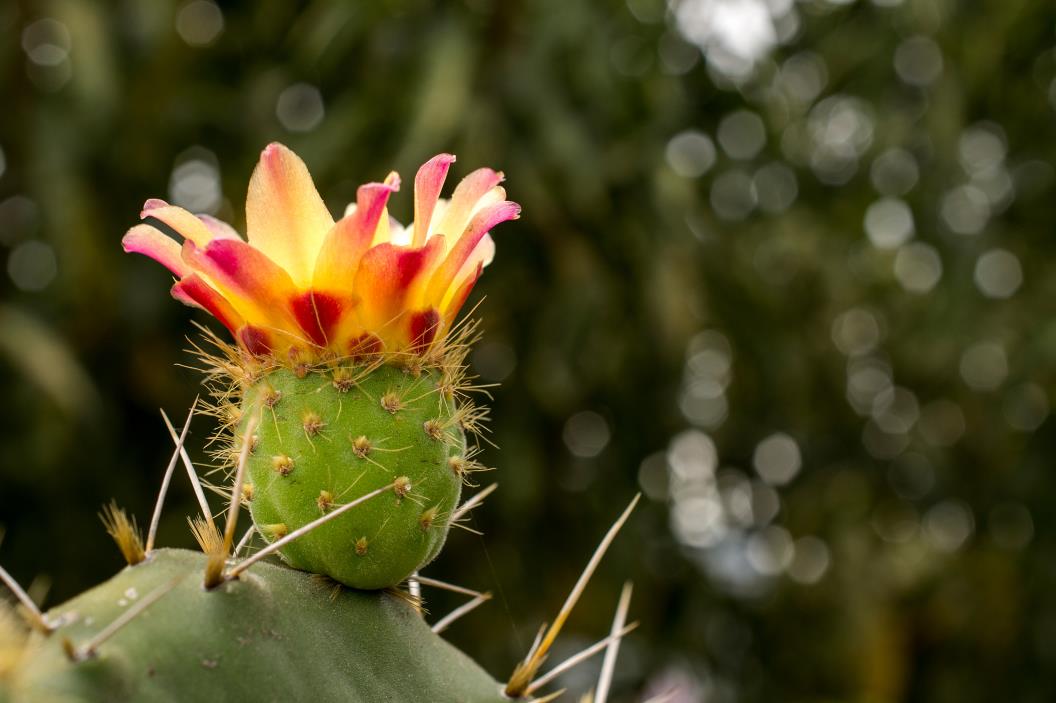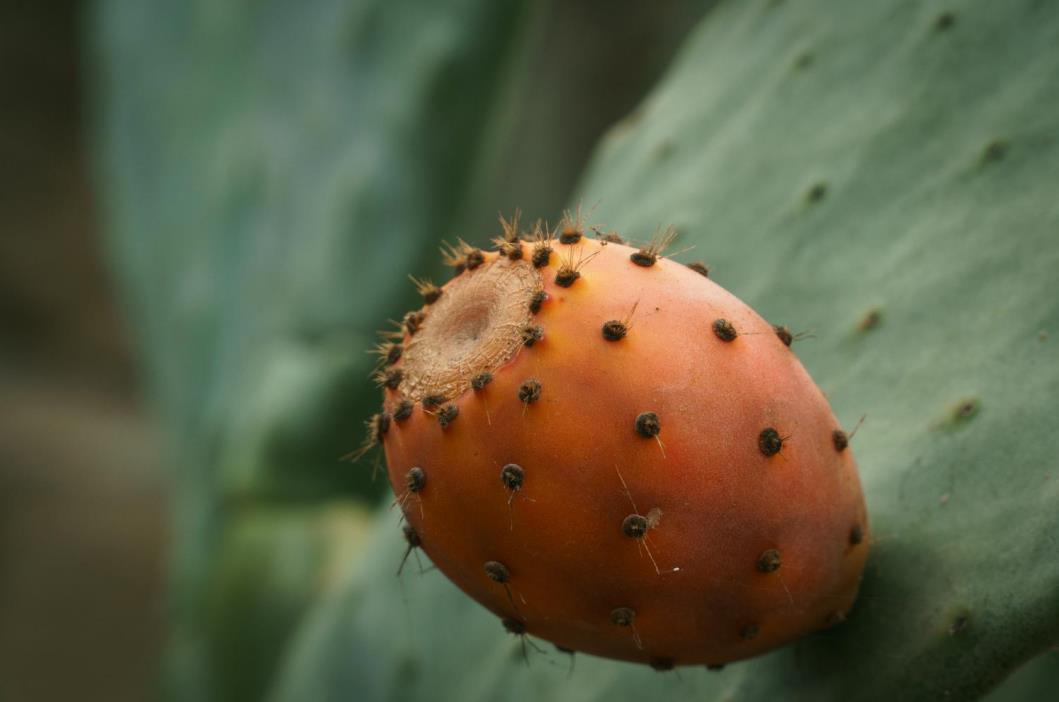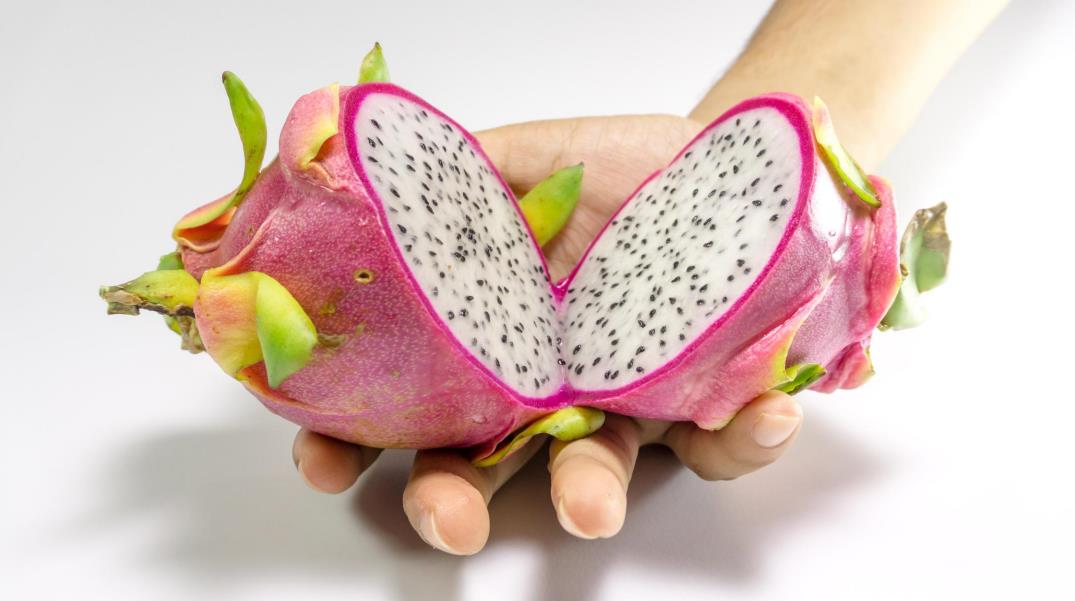Prickly pear is a sweet, juicy fruit that has more place in the food and beverage industry, often used for making smoothies, syrups, jams, jellies, and more. Although it isn’t as widespread in grocery stores as other fruits, they’ll surprise you with a mesmerizing flavor.
They may look strange at first and seem identical to the dragon fruit, but prickly pear is a distinct fruit with a totally different flavor. It tastes more like watermelon and a lot more refreshing than the dragon fruit – more on the differences between these two fruits below.
Also known as the cactus fruit, prickly pears are low in calories and carbs, making it friendly to the ketogenic diet and those looking to cut down on calories. Taking your knife to cut open a prickly pear doesn’t take a marvelous chef. Any home cook that knows how to handle a kitchen knife can munch on it right away.
This guide will help you with preparing and cutting prickly pear. Here is everything you need to know on how to eat prickly pear, from removing its thorns (glochids) to peeling its skin to removing the large seeds.
Table of contents
What is a prickly pear?

Prickly pear belongs to the Cactaceae family. The same as other plants in the cactus family, it is known for the thorns growing on its skin. Prickly pears grow on somewhat thin cactuses with flowers on top of the fruit.
The fruit itself is usually red/purple or orange/yellow. When freshly picked up, the prickly pears are green. They slowly turn into the mentioned colors as they ripen. The fruit has seeds in the flesh, like kiwifruit, but some are much bigger.
Some prickly pears in the stores come with the thorns still on them. If you bought it from a farmer’s market, you’re likely to get it with the spines attached. Before slicing into it, you’ll have some preparation to do in this case. Here is a step-by-step guide on how to prepare and cut prickly pear.
How to prepare prickly pear
The prickly pear thorns are usually removed before they reach the shelves. Some of the spines are tiny; some are big. Regardless of the size of the spines, wear gloves beforehand and handle with care.
Removing the thorns

The thorns on prickly pear are easy to go unnoticed. Once you pick one, you’ll feel it, though. It’s important to remove the thorns entirely to be safe before peeling.
The easiest way to remove the spines from a prickly pear is to toss them in a strainer with large holes and wash them under the sink. Shake the strainer as you rinse the fruits under running water to ensure all the thorns fall off the skin.
Additionally, you can pierce the prickly pear with a fork to hold it under running water. This method works the best if you only have a few in hand. Otherwise, it would take you long to clean all the fruits. Make sure not to punch through the prickly pear too deep. Get the fork in there enough to hold it under the sink stably.
The fruit’s skin should look smooth after removing the thorns. If there are any stubborn thorns, you can use tweezers to get rid of them. Once you’re done, make sure to rinse the sink to wash away any spines that might come in contact with other foods later on.
How to peel and cut prickly pear?
Peeling a prickly pear is effortless. Once you get the right technique, it’ll be a breeze to peel a bunch of them at once. Here is how.
- Cut about 1/2 inch on both ends.
- Hold the prickly pear in place and slice the skin from one end to the other. Don’t go too deep; otherwise, you’ll cut the fruit, and the juices will drip.
- Using one finger, get under the skin and roll the fruit while holding the skin. The skin should come off quickly, and you’ll separate the skin from the flesh.
Although the skin is edible, we highly recommend removing it. If you’re going to give it a taste, be sure to inspect thoroughly for any remaining tiny spines for good measure.
Additionally, you can keep the skin intact when juicing it. However, the skin and the seeds will thicken the blend, and you’ll need to strain the juices. Before moving everything from the food processor to a container, use a mesh strainer or cheesecloth and press with a spoon or squeeze to transfer all the juices.
Handpicked for you
True cutting power in the palm of your hand
Slicing the prickly pear
After removing the skin, the whole prickly pear is edible – well, aside from the seeds. Prickly pears have hard seeds, and you can’t really bite into them. After slicing the prickly pear, flick the knife’s tip under the seeds to remove them. They will come off the flesh effortlessly, just like peeling the skin.
Once the seeds are gone, you can then cut the prickly pear into any shape. Cubes for fruit salads and, slices for fruit bowls. Because of the juiciness and the hard seeds, you’ll need to cut it. How? It’s up to you but munching on it like an apple will end up with a big mess and stubborn stains on your clothes.
Note that prickly pears are commonly used for making natural dye. You might want to wear your less favored shirts before cutting them.
There you have it – cutting a prickly pear, popularly known as the tuna fruit or cactus fruit, is as simple as that.
Differences between dragon fruit and prickly pear

In a previous guide, we covered how to cut dragon fruit. When comparing both fruits, there are similarities. After all, dragon fruit and prickly pear are basically cousins and both are indigenous to the Americas. However, dragon fruit and prickly pear are not the same. The dragon fruit is a subtropical fruit mainly found in South and Central America. The prickly pear is native to Mexico and the West Indies, which have a much drier climate.
The way you prepare and peel them are pretty much the same, but dragon fruit’s flesh has smaller and softer seeds similar to the kiwifruit. While you can easily bite and chew on dragon fruit seeds, it isn’t the same with prickly pears. They have bigger and tougher seeds that are hard to chew. Swallowing them won’t pose a health risk, but it’s best to remove them as you slice into it.
Ways to eat prickly pears
Other than eating it as it is or juicing it, prickly pears make delicious jams and jellies. Preparing prickly pear jams or jellies take very little time if you have already cleaned them free from spines.
Additionally, they make great syrups for cocktails. The prickly pear’s sweet taste and texture is the ideal syrup material for summer beverages.
FAQs
How to store prickly pears?
You can store ripe prickly pears in the refrigerator for up to a week. If the fruit isn’t ripe yet, let it mature at room temperature until the skin turns red, softens up, and the spines fall off gradually. Do not store prickly pears directly after washing them. It’s best to keep them unwashed. If you washed any but need to store them, remove the spines and dry the skin thoroughly to prevent it from going bad quickly.
How to pick a good prickly pear in the store?
Picking the good prickly pears could be a challenge if you’re new to them. Like picking similar fruits, gently press on the skin to see how it reacts. If it gives too much, it’s probably overripe. If it’s too firm, it’s not ripe yet. When you’re not in a hurry, pick the ones that need more time and let them ripen up over a few days at room temperature. Other than these, watch out for bruises and the color. There shouldn’t be dark spots aside from where the thorns grow.
Are prickly pear seeds edible?
The prickly pear seeds are perfectly edible. However, they don’t add the same crunchiness to the soft, juicy texture of the flesh as comparable fruits do. The prickly pear seeds are very tough and hard to chew. After peeling the fruit, remove the seeds before eating it or spit them out as you eat like you’d do when eating watermelon.
What is prickly pear good for?
Prickly pears are low in calories and contain plenty of potassium, magnesium, and calcium, which are detrimental to treating high blood pressure. They are also good for high cholesterol, diabetes, and help control appetite. While prickly pears can benefit many, those with inflammatory conditions, such as diverticulitis or colitis, should avoid eating them due to the high fiber content.
Ending
Peeling and cutting open a prickly pear is no sweat. It’s a juicy and tasty fruit to treat yourself. If you’re planning to throw away the seeds, think again. The natural oils in the seeds reduce wrinkle formation, brighten dark spots under the eyes, and provide many other benefits to the skin.
Having the perfect slices require a knife with great precision. Check out our homepage to equip yourself with handmade kitchen knives. Read more kitchen tips on HDMD Knives Blog.












